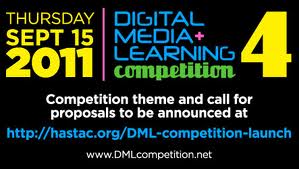In “What Tech in Schools Really Looks Like,” Audrey Watters describes the distribution of technology in US K-12 classrooms. Watters offers some notable examples of how schools are using digital media for learning, “[b]ut stories like these don’t represent what’s happening in most of our nation’s schools,” she points out. I argued a similar point re. mobile learning at MobilityShifts.org this fall: despite promising anecdotes and amazing potential, mobiles are not being leveraged for learning. The central idea for Watters, though, concerns inequity: “…the distribution of technology in our classrooms remains radically uneven. It differs by school and grade level. It differs by region. It differs in the make, model, and operating system of various computers. It differs in usage.”
There are a number of reasons why this is so, some of which I will examine in an article I am writing for IJLM, but for now I’d like to discuss a central point in Watter’s piece: BYOT (Bring Your Own Technology) / mobiles. More specifically, could the mobile device be a step toward addressing the radical inequality Watters describes? While this inequality reveals itself in varied regional and socioeconomic contexts, I’d like to focus on urban youth. We know from Pew Research that mobile adoption in black and Hispanic populations has been strong. In many instances, some less advantaged socioeconomic groups have skipped landlines and laptops, and have gone directly mobile. Is this an opportunity?
Here’s where Chris Emdin comes in. Emdin is a professor at the Department of Mathematics, Science and Technology at Teachers College, Columbia University. His recent work focuses on how to teach, or inspire the curiosity to learn, STEM subjects.
Emdin has a new book out, Urban Science Education for the Hip-hop Generation, one he recently discussed in conversation with @NewBlackMan, Mark Anthony Neal.
In the interview, Emdin proposes our using the languages and culture of the “‘hood” to teach sciences. He suggests focusing on urban youth culture, a black vernacular that has been marginalized in STEM disciplines. How, Emdin asks, may hip hop culture be used as a pedagogical tool?
This makes sense: Use the forces and influences in brown and black students’ lives (what Emdin describes as “a way of knowing and being”) to connect content and skills for learning in sciences.
So, what if we were to connect the dots between Emdin’s ideas, Audrey Watters’ ideas, and mobile devices?
I can imagine an entire program designed and implemented around mobiles—the devices many students already own—to leverage mobile technology for STEM learning. Why don’t we design curricula that are mobile, using the neighborhood as the science lab? (You could easily use platforms such as TheWildLab.org.) And thinking about Connected Learning, I also imagine Mobile STEM for the ‘Hood as successfully embodying connected design and learning principals.
Learning Principles
Interest-powered
Peer-supported
Academically oriented
Design Principles
Production-centered
Openly networked
Shared purpose
And Audrey Watters
“What Tech in Schools Really Looks Like”
And Chris Emdin












